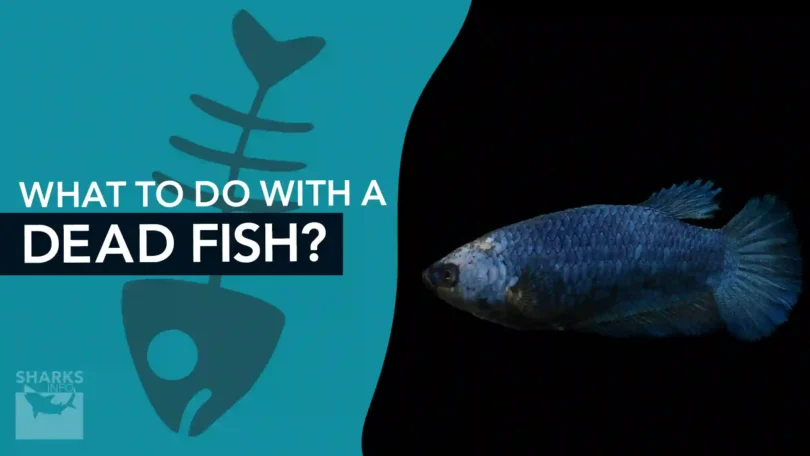All the fish owners have to experience the death of their pet fish. When the fish is dead, it is obvious that it needs to be disposed of. People use different ways to dispose of a dead fish according to their own thinking. Some people dispose of it by burying it, some throw it into the bin or in the garbage, while some flush it in the toilet.
While there are different ways to dispose of a dead fish, all the ways adopted to do so are not correct and there are some ways that are very commonly adopted but should be avoided to keep the environment clean and healthier.
How to Tell if the Fish is Dead or Not?
Before adopting any method to dispose of a fish, you must make it clear that the fish is actually dead. In some cases, some fish (like catfish) seem to be dead but in actuality, they are just sleeping or resting. To check whether the fish is actually dead or not, observe its gills movement for a few minutes. Some fish breathe through their months (like betta fish). For them, observe the movement of their mouth. If the gills of the fish did not move even for a single instance, you can tell that the fish may be dead but to confirm it, you need to observe some other factors also.
Some fish sink down when they are dead while the others float up on the water surface. Take out the fish using a net, a spoon or any other tool that you find easy. Observe the fish while taking it out carefully. An alive fish will probably strive to go back but a dead fish will not show any movement.
If the fish did not move while you touch it or take it out, it is another indication that the fish is dead. After taking the fish out, you should smell it. If it smells fine like the other fish, there may be a possibility that it is not yet dead. If it smells bad and pungent, you can tell that the fish is dead and prepare to dispose of it.
When you finally figured that the fish is no more, you can then place it in a plastic bag or a zip-lock bag till the time you dispose of it. Doing this prevents the germs from spreading in the surroundings. It is also very important to test the water right after knowing that the fish is dead because the aquarium fish mostly dies because of dirty and unhygienic water. It is also recommended to change the water of the aquarium after taking out the dead fish to maintain good hygiene to the other fish in that aquarium.

How to Dispose of a Dead Fish?
There are various ways that people consider to dispose of a dead fish as discussed above. Let’s discuss some ways that are not harmful for the environment and that you can consider without worrying:
Bury it
Wrap the fish up in a paper bag rather than using a plastic bag to make the process environment friendly. Choose the backyard or to bury your dead pet fish. The nutrients released while burying the dead fish helps fertilize the plants or trees. So, it is recommended to bury the fish under plants or trees. Dig the soil and then put the fish inside and cover the soil.
Put it in Waste
This method is not highly recommended but if you are in a hurry or want an instant process to dispose of the fish, you can cover or wrap the fish in a biodegradable bag and then put the body in the waste. Using biodegradable material is essential because the dead fish releases the substances that are hazardous and not environment friendly.
Cremate it
Cremating the dead fish means to burn it into ashes. You can also cremate the dead pet fish if you cannot bury it for some reason. This is because cremating the dead fish will remove all the germs. But, cremation of the dead must always be done with proper care.
Many people consider ways like flushing the fish in the toilet that are not only inhumane but also very toxic for the environment. So, you should refrain from using such methods to dispose of the fish.
The Bottom Line
When the pet fish dies, it is important to change the water of the aquarium after taking out the dead fish to maintain good hygiene for the other fish in the aquarium. After taking the fish out, it is important to dispose of it. You can dispose of the fish by either burying it down in your backyard or wrapping it up in a paper bag or putting it in the waste or cremating it.







